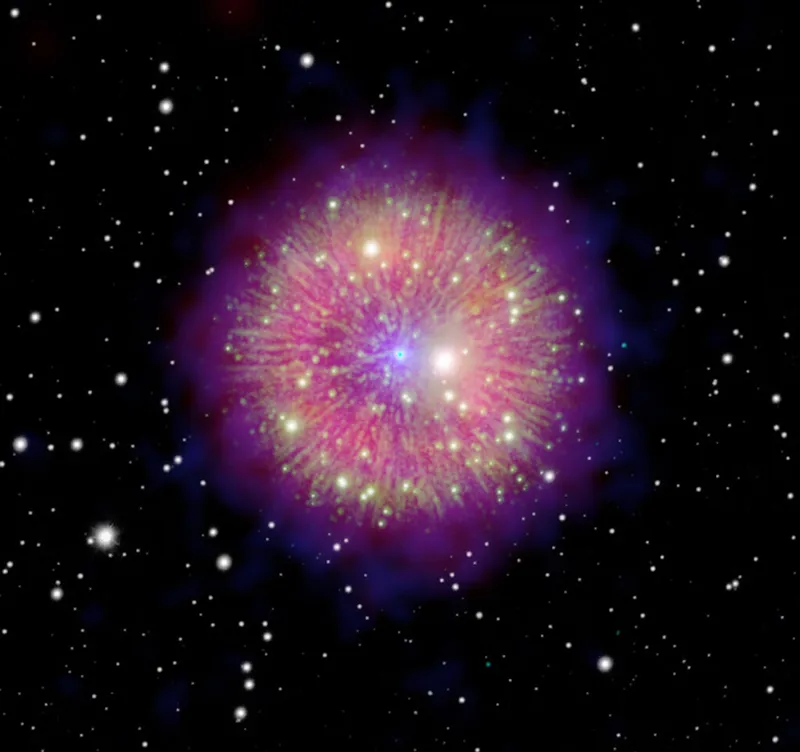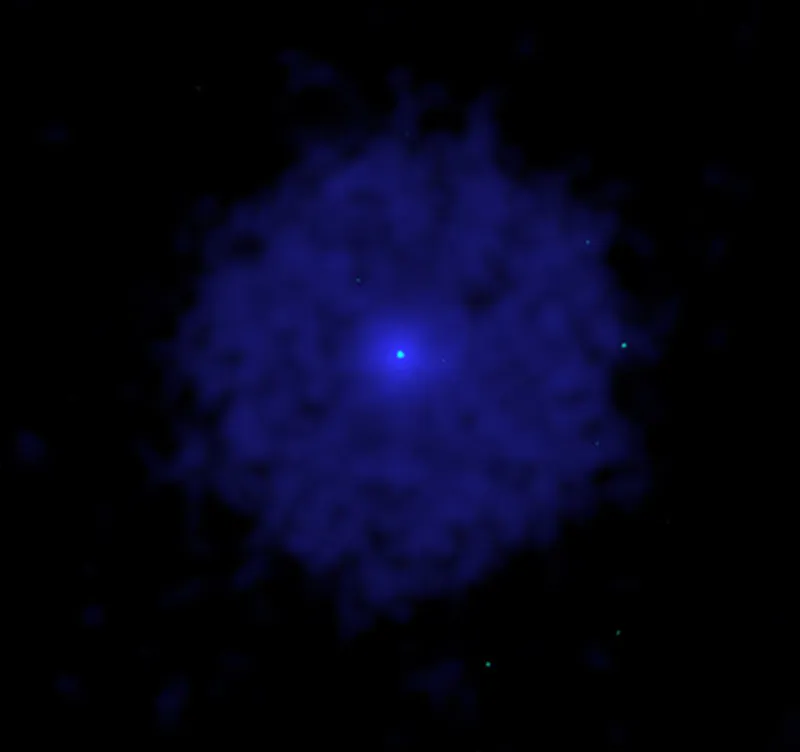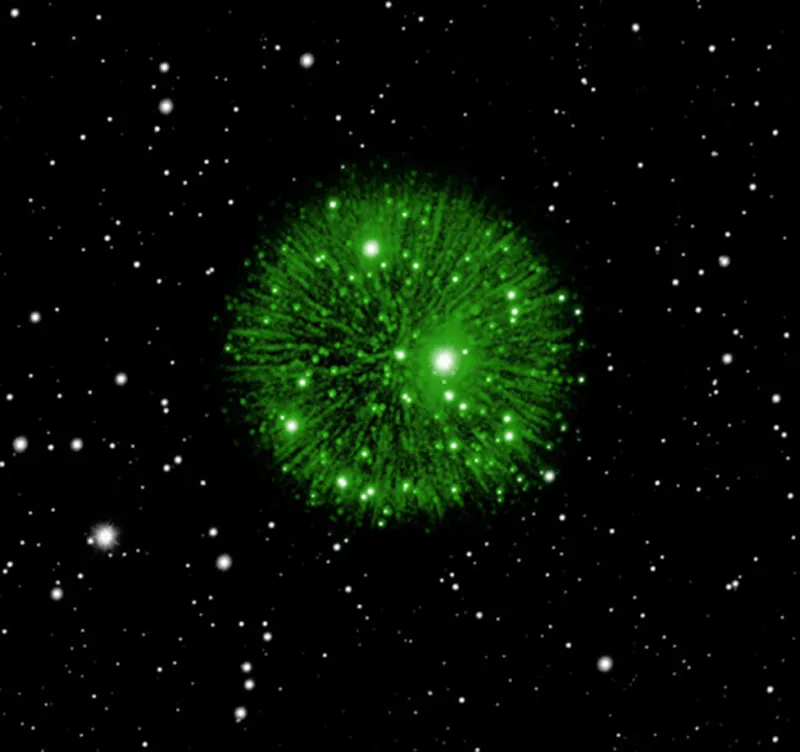Multiple telescopes have captured an image showing the remnants of a supernova explosion that would have been visible from Earth in the year 1181, known as SN 1181.
Historical records show that in 1181 a supernova - an exploded star - appeared in the night sky and was visible for 185 days in a row.
According to records, the supernova looked like a new star in the constellation Cassiopeia and shone as bright as the planet Saturn.
Having an historical record of an astronomical event from 1181 is a gift to astronomers and historians of astronomy, but could it be possible to find the remnants of the supernova today, using our fleet of powerful telescopes?
It was initially thought that the supernova remnant could be the nebula located around pulsar 3C 58.
Pulsars are the dense core of collapsed stars, so this looked like a possibility, but analysis showed the pulsar is even older than the supernova SN 1181.

Pa 30, pictured above, was identified as another contender for the SN 1181 crown.
This nebula is beautifully circular and boasts a central star located in Cassiopeia.
The image of the nebula shown here is a composite using data from several telescopes, and astronomers say this is the remnant of supernova SN 1181.
Observing this image means we're looking at the same object that was seen by stargazers over 800 years ago.
Capturing and studying SN 1181

The image of SN 1181 was captured by ESA’s XMM-Newton spacecraft (data in blue), showing the full extent of the nebula, and NASA’s Chandra X-ray Observatory (cyan), highlighting its central source.
These telescopes are able to see what the human eye cannot: the nebula is barely visible in optical light but shines brightly in infrared, seen in red and pink data collected by NASA’s Wide-field Infrared Space Explorer.
The spokes in green appearing to emanate from the centre of the nebula are heated sulphur glowing in visible light, observed with the ground-based Hiltner 2.4 m telescope at the MDM Observatory in Arizona, USA.
Background stars were captured by Pan-STARRS in Hawaii, USA.

Studies of the composition of the different parts of the supernova remnant can even tell astronomers what type of explosion occurred.
The explosion, they say, was a thermonuclear explosion, a type of supernova called a sub-luminous Type Iax event.
It occurred when two white dwarf stars merged, and usually no remnant would be seen after this kind of explosion.
But incomplete explosions are known to leave a sort of 'undead' star behind, and that's what's happened here.
The star is one of the hottest stars in the Milky Way, about 200,000 degrees Celsius), and is projecting stellar winds into space at speeds of up to 16,000 km/s.
